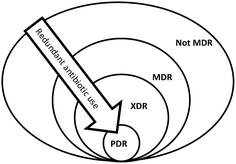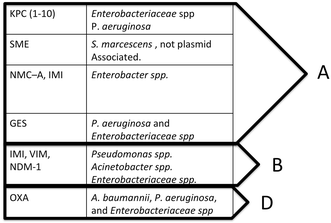What's new in multidrug-resistant pathogens in the ICU?
- PMID: 27714706
- PMCID: PMC5053965
- DOI: 10.1186/s13613-016-0199-4
What's new in multidrug-resistant pathogens in the ICU?
Abstract
Over the last several decades, antibacterial drug use has become widespread with their misuse being an ever-increasing phenomenon. Consequently, antibacterial drugs have become less effective or even ineffective, resulting in a global health security emergency. The prevalence of multidrug-resistant organisms (MDROs) varies widely among regions and countries. The primary aim of antibiotic stewardship programs is to supervise the three most influential factors contributing to the development and transmission of MDROs, namely: (1) appropriate antibiotic prescribing; (2) early detection and prevention of cross-colonization of MDROs; and (3) elimination of reservoirs. In the future, it is expected that a number of countries will experience a rise in MDROs. These infections will be associated with a high consumption of healthcare resources manifested by a prolonged hospital stay and high mortality. As a counteractive strategy, minimization of broad-spectrum antibiotic use and prompt antibiotic administration will aid in reduction of antibiotic resistance. Innovative management approaches include development and implementation of rapid diagnostic tests that will help in both shortening the duration of therapy and allowing early targeted therapy. The institution of more accessible therapeutic drug monitoring will help to optimize drug administration and support a patient-specific approach. Areas where further research is required are investigation into the heterogeneity of critically ill patients and the need for new antibacterial drug development.
Figures


References
-
- Martin-Loeches I, Torres A, Rinaudo M, Terraneo S, de Rosa F, Ramirez P, et al. Resistance patterns and outcomes in intensive care unit (ICU)-acquired pneumonia. Validation of European Centre for Disease Prevention and Control (ECDC) and the Centers for Disease Control and Prevention (CDC) classification of multidrug resistant organism. J Infect. 2015;70:213–222. doi: 10.1016/j.jinf.2014.10.004. - DOI - PubMed
-
- http://www.who.int/drugresistance/documents/surveillancereport/en/. Accessed 20 Sept 2016.
Publication types
LinkOut - more resources
Full Text Sources
Other Literature Sources
Medical
Research Materials

